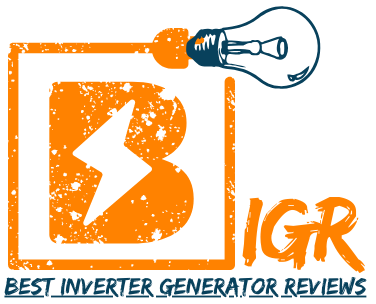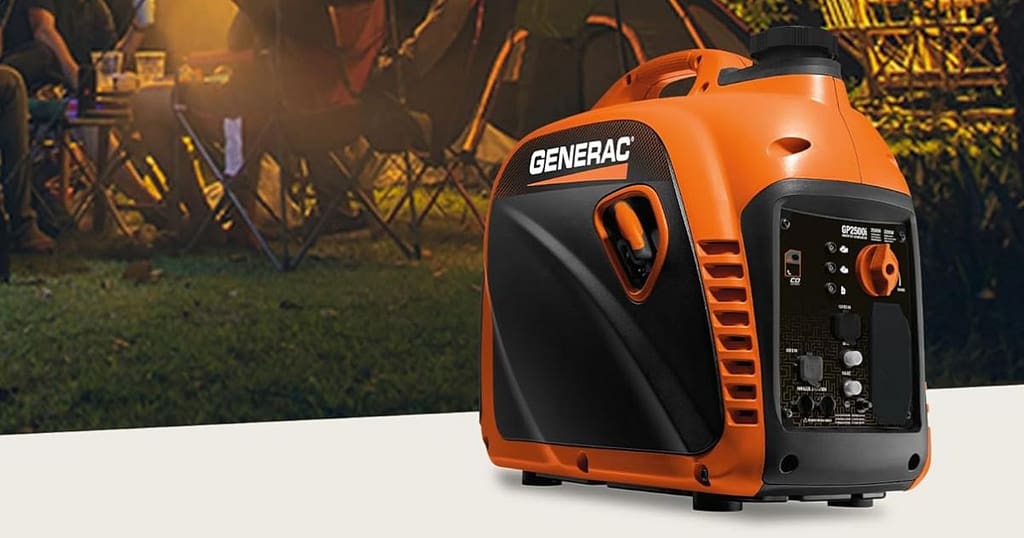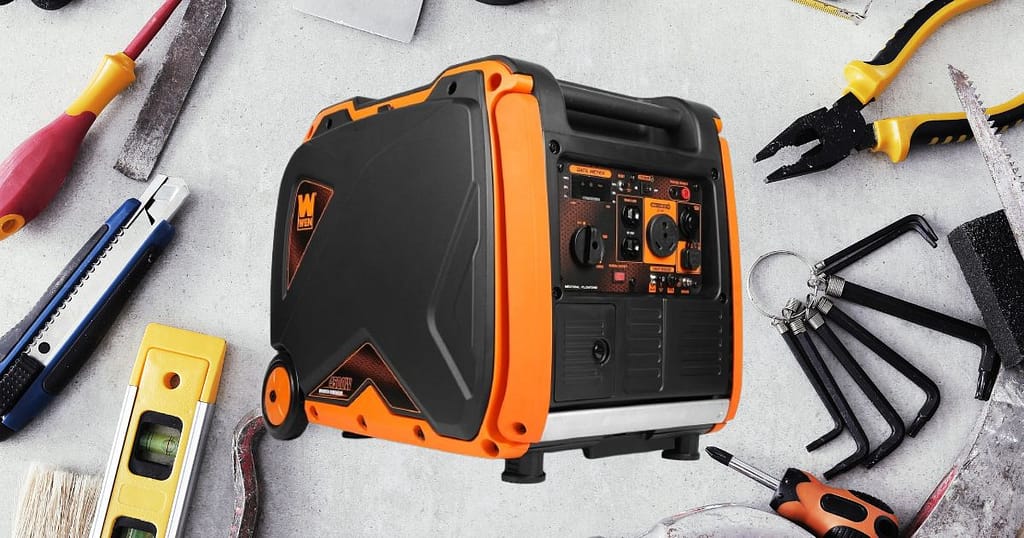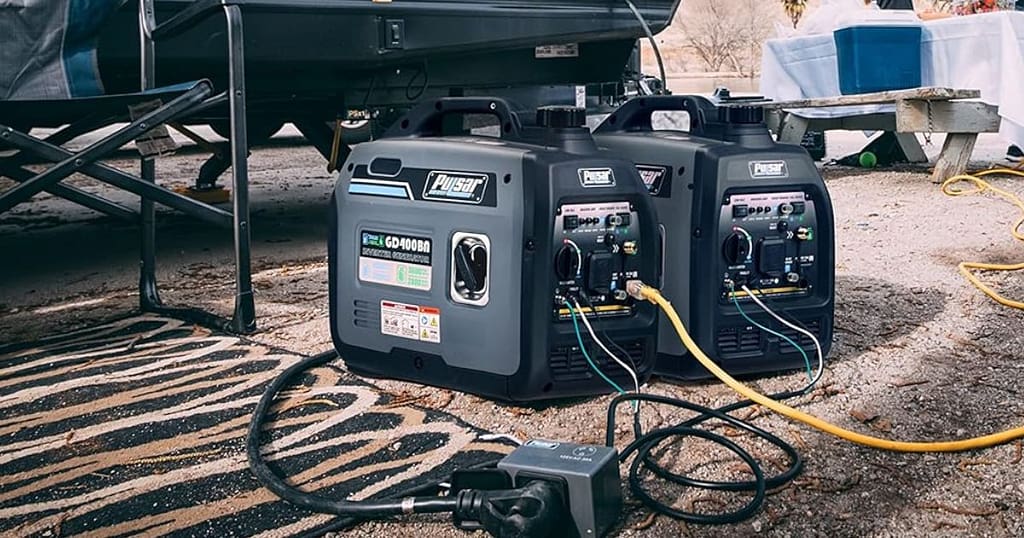Portable generators are very important for us for home construction or job sites. They make our work easier as much as possible with low effort and less time.
However, in this blog, we’ll talk about how to choose right generator for construction sites. After deep research and getting some advice from experts, we brought up some important factors that should be considered when buying a generator for construction or job sites. So, continue reading this guide to make your decision right.
Small Backup Generators (1,000 TO 5,000 WATTS)
When it comes to getting work done around the house or workshop, having access to reliable power is a must. But what if the power goes out right in the middle of a project? That’s where a small backup generator comes in handy. As someone who’s relied on power tools for both work and play over the years, I’ve learned that you don’t need a massive generator taking up your whole garage – sometimes less is more.
Backup units in the 1,000 to 5,000-watt range are perfect for occasional use or jobs that only require one or two tools running at a time. They’re lightweight and portable enough to move around wherever you need extra juice. I keep a 2,000-watt generator in the back of my truck just in case I get stuck needing to charge a battery or use my miter saw at a job site without an outlet. It kicks in with plenty of power for small appliances and power tools without breaking my back to haul it.
If you’re in the market for a backup unit in this size class, I’d recommend checking out what a 2,000-watt generator can actually run before making your decision. You may find you don’t need quite as much power capacity as you thought. There are also some great generator buying guides and reviews out there that break down the top models in the 2,000-4,000-watt generator range. Doing your research upfront will help you choose the right size for your needs without overspending.
Semi-professional Generators (3,000 TO 10,000 WATTS)
Whether you’re a contractor running job sites or a homeowner who needs backup power you can count on, a semi-professional generator in the 3,000–10,000 watt range delivers workhorse reliability. These units feature heavy-duty engines and durable components that can handle frequent use powering an array of tools and machines.
As someone who’s relied on generators for both personal and professional projects over the years, I can attest that the extra features in semi-pro models are invaluable on job sites. Convenient outlets, load management systems, and longer run times between refueling save me time and hassle versus lugging multiple smaller generators around. When your livelihood depends on getting the job done, the last thing you want is a generator failing in the middle of a task.
If you find yourself in need of backup power for more than just occasional outages, investing in a semi-pro generator pays off. I’d also recommend checking what can be powered by a 5,000-watt generator before deciding on the right size. Contractors especially will appreciate the ability to run multiple tools simultaneously without tripping breakers or overloading the generator.
Heavy-duty Tools & Machines (2,500 TO 15,000 WATTS)
When you need reliable power day in and day out for big construction equipment and tools, nothing beats a heavy-duty generator in the 2,500-15,000 watt range. As someone who’s run more than my share of job sites over the years, I can tell you these generators are built to withstand the punishing conditions of real-world work.
I’ve seen smaller “portable” units fail within months under the stress of constant use in extreme environments. But the heavy hitters I rely on just keep on trucking without missing a beat. Durable components, stable output for extended run times, and features like load management and low oil shutdown protect my investment season after season. When paychecks depend on getting the job done, the last thing you need is downtime due to a faulty generator.
If you find yourself powering demanding equipment like welders, air compressors, or large power tools, checking out options like 12,000 and 15,000-watt generators is a must. The ability to run multiple machines simultaneously without overloading is priceless on a job site. Our shopping guides break down the features to focus on like fuel capacity, decibel levels, and outlets for different heavy-duty needs.
Quality and reliability should be top priorities when it comes to generators for construction work. Cut corners elsewhere if needed but don’t compromise on the generator powering your livelihood. Investing in a heavy-hitter pays off productivity and peace of mind in the long run.
You may also check best 50amps generators.
Think About Your Power Need
Step 1: Calculate your power
One of the most important factors when choosing a generator is getting the right size – you don’t want to overload it but you need enough juice for all your tools. Here’s a simple step-by-step process I use to accurately assess my power requirements for any job:
Make a list of all the tools and appliances you expect to use simultaneously. This could include things like lights, a compressor, a table saw, a miter saw, etc.
Check the nameplates of each item for running and starting wattages. I jot these down in a table for easy reference later.
Add up the total running watts of everything that’ll be plugged in at once. This gives me the baseline power needs.
Note the tool with the highest starting wattage separately, as generators must supply this spike initially.
I add the highest starting wattage to the total running watts. This gives the minimum continuous wattage the generator needs to handle.
For example, if running lights, an air compressor, a miter saw, a circular saw, and a drill at a job:
Tool – Running Watts – Starting Watts
- Lights – 100W – N/A
- Compressor – 1600W – 4500W
- Miter Saw – 1800W – 1800W
- Circular Saw – 1400W – 4200W
- Drill – 600W – 900W
- Total Running = 5,500W
- Highest Start = 11,400W
- Minimum Generator = 5,500W + 11,400W = 16,900W
Sizing right means no overloaded circuits or underpowered tools. Take the time to calculate – it pays off in productivity and safety on the job site.
Step 2: Average Output Capacity
Once you’ve calculated the total wattage requirements for your project, the next step is considering output capacity. If full load usage will be intermittent, multiple smaller generators connected in parallel can provide flexibility.
For example, if your tools total 5,000 running watts but heavy usage is only occasional, two 2,500-watt units are wired together to act as one 5,000-watt generator. You can run one unit during lighter loads to save fuel. This also avoids issues like “wet stacking” which impacts efficiency at partial loads for diesel engines.
Redundancy is another advantage – the chance of both units failing simultaneously is low, so you have backup power if one goes down for repairs. While the initial cost may be slightly higher, greater flexibility more than makes up for it. Lighter individual units also enhance portability for mobile projects.
Be sure any parallel setup uses transfer switches or adapters rated for the job. With the right equipment safely configured, multiple generators provide insurance against downtime from repairs or peak demands exceeding a single unit’s capacity. Proper installation is important for reliability and safety.
Consider both intermittent vs constant loads, and mobility needs when analyzing large vs small, and single vs multiple generator options. The right configuration ensures efficient, continuous power for any project.
Step 3: Consider Generator size
When it comes to generators for construction work, the size and portability factors are important to consider. Here are the main options to think about:
Portable Generators:
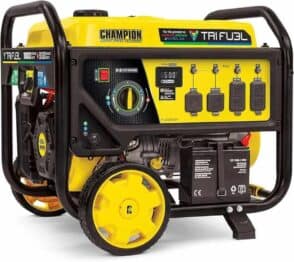
Perfect for smaller jobs and easy to transport in the back of a truck. As someone who relies on generators, I appreciate how compact portable models are for storing out of the way on job sites. Rated from 6-28kW, these are versatile for medium power needs, and connecting in parallel expands capacity further.
Mobile Generators:
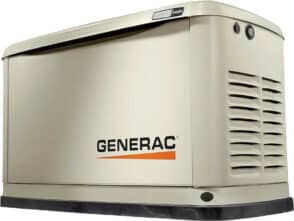
If you need massive power output, mobile units mounted on trailers are the way to go. Ranging from 8-200kW, they can run even the most demanding equipment. The tradeoff is size – these take up more space. But the durable and weatherproof design means reliable operation even in tough conditions.
Evaluate your typical power demands and workspace. Portables excel for mobility but mobile generators offer serious juice for big projects. Both have merits; consider cost, output needs, and job site practicalities to choose what works best for you. Reliable power is essential to any contractor’s business, so get the right size generator solution.
How to Choose Right Generator for Construction Sites
While portable generators are certainly handy to have on job sites, it’s important contractors go into generator ownership with their eyes wide open. Here are some lesser-considered drawbacks we’ve noticed over the years.
Regular Maintenance
As anyone who relies on tools for their work knows, regular maintenance is key to maximizing the lifespan and dependability of equipment. Generators used on job sites see a lot of wear and tear over their operating hours, so it’s essential to have a solid preventative maintenance plan in place. But too often busy contractors neglect scheduled services, leading to bigger issues down the line that cause costly downtime. Taking a proactive approach is well worth the investment to keep your portable power source running strong.
While simple checks seem straightforward, major maintenance is best left to experts. Certified generator technicians have specialized diagnostic tools and factory training to properly inspect engines for wear and replace parts before failures occur. Amateur work risks voiding warranties. Opting for a full-service maintenance contract with your supplier ensures all services are performed on schedule by their pros.
Experts can also identify small problems early that we may miss, like subtle changes in noises or performance. They know what red flags to listen for signaling the need for repairs sooner rather than later. Catching minor issues promptly is far more affordable than replacing worn components down the road. A good technician becomes familiar with your unit too, so they can better track its health over time.
Don’t forget scheduled maintenance also keeps proper documentation in your records. Should anything go wrong during critical work, service records make warranty claims or repairs much smoother. It shows you take good care of your equipment. Ultimately, outsourcing generator maintenance to certified professionals gives total peace of mind that your job site power source is in tip-top dependable shape all season long.
Storage Requirements
Keeping your portable power source properly stored when not in use is just as important as routine maintenance to ensure it’s ready to go when needed. The last thing any contractor wants is a generator that won’t start up reliably due to improper off-season care. Some advance planning makes storage hassle-free.
A wheel kit and fold-out handle allow easy transport of your generator wherever it will be stored. No heavy lifting or awkward maneuvering is required. It’s also wise to choose a location away from extreme weather elements, as well as any potential water sources in case of rain or flooding. High and dry storage is best.
Pay close attention to fuel as well. Either drain the gas tank completely before longer-term storage or add a fuel stabilizer designed to prevent deterioration. Allowing stored fuel to go untreated risks gum and varnish buildup that can clog the carburetor. An integrated fuel shut-off valve simplifies the draining process immensely.
Local Laws & Regulations
While portable generators deliver valuable backup power, contractors need to be mindful of relevant local laws and regulations governing appropriate use. What’s legal in one area may not fly elsewhere. It’s always best to do your homework so expensive equipment ends up meeting standards where needed most. A little upfront vetting saves headaches down the road.
Noise and emissions standards vary widely by location. City centers tend to restrict maximum decibel levels more strictly to avoid disturbance. Similarly, air quality management districts often cap emission outputs, especially for volatile organic compounds. It pays to understand limits that could rule out some gasoline-powered options.
Laws may also govern permissible run times during outages or restrict commercial operation in residential zones. Knowing applicable guidelines prevents complaints from neighbors or citations from code enforcement. Permits could even be required for generators serving large job sites.
The best approach is to contact your local dealer and ask plenty of questions before purchasing. Reputable suppliers stay up-to-date on changing rules across their coverage areas. They can recommend generator models that comply with standards where you work. Don’t forget to also check with your city or county building department for specifics too.
Altitude of Job Site
When working jobs in mountainous or elevated regions, portable generator selection requires extra consideration. Altitude can significantly impact engine efficiency, so it’s important contractors understand these performance variances. Oversights could leave your power needs under-served at critical times.
As the age-old saying goes, engines produce roughly 3% less power for every 1,000 feet climbed. So if operating at 5,000 feet versus sea level, you can expect around a 15% reduction in output. Don’t rely on a generator barely meeting your wattage requirements at a plain’s job.
High altitude also means thinner air, which translates to less oxygen available for combustion. This stresses engines trying to maintain full power loads. Consider sizing up a class if regular work takes you much over 3,000 feet.
Cooler temperatures at elevation further impact engine efficiency. An arctic package equipped with battery warmers and quick-start components proves invaluable in frigid climes. It ensures reliable cranking even when thermometers drop well below freezing.
Consult reputable dealers knowledgeable about regional conditions. They can recommend models and additional accessories tailored for optimal mountain performance where you work. Don’t assume a standard generator will deliver as advertised above 5,000 feet.
The Invisible Threat Of Carbon Monoxide
As contractors, safety is our top priority. But all too often the very tools powering our work can pose hidden dangers if not handled properly. One such risk is carbon monoxide emitted from generators – a stealthy toxin that claims innocent lives each year. While CO plays a vital role keeping engines running smoothly, we must respect its lethal potential wherever people may be exposed.
Being odorless and colorless, carbon monoxide finds its way into victims silently with no outward signs of distress. Only specialized detectors can sound the alarm on its presence before it’s too late. That’s why using generators requires extra precautions, especially in residential areas where neighbors may unknowingly wander into contaminated spaces.
Never operate portable units indoors or within enclosed structures like garages, even if doors and windows are open. Fumes pool and linger, posing risks to anyone entering later on. Follow manufacturer guidelines for minimum safe distances away from occupied dwellings as well. Informed neighbors should also be made aware of any generator use near their homes.
Taking simple steps like proper placement, thorough ventilation of work areas, and carbon monoxide detector installation can help protect workers and communities from this stealth threat. Our jobs often power modern living, so ensuring public safety should always accompany the services we provide. With awareness and care, we can continue our important work without endangering the lives of those around us.
